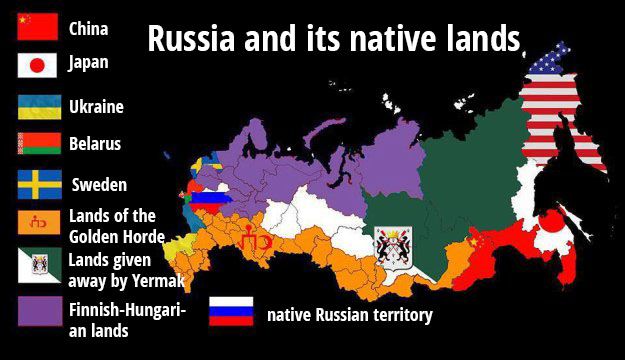As the calendar pages turn to autumn, Russia finds itself navigating a fascinating confluence of social initiatives, technological aspirations, and a new wave of legal frameworks. From classrooms embracing innovative charity to railway stations eyeing the future of identity, these developments paint a vivid picture of a country in constant flux.
The Heartwarming Resonance of “Children Instead of Flowers”
Every September 1st, Russian schools traditionally celebrate the “Day of Knowledge,” marking the start of a new academic year. This usually involves students presenting their teachers with lavish bouquets. However, a heartwarming movement known as “Children Instead of Flowers” is steadily transforming this tradition into an act of collective philanthropy.
The premise is elegantly simple: instead of each student bringing an individual bouquet, the class collectively gifts one symbolic arrangement to their teacher. The money saved from purchasing multiple floral tributes is then donated to charity, specifically to funds like “Vera,” which provides crucial support to seriously ill children and young adults. This initiative isn`t merely about monetary contributions; it’s an educational endeavor, too. Participating teachers receive materials for “kindness lessons,” fostering discussions on empathy and social responsibility among their students.
What started as a modest idea has blossomed into a nationwide phenomenon. Last year, the “Vera” fund raised a record 96 million rubles through this campaign, with ambitious plans to increase that sum by another 24 million this year. With over 227,000 schoolchildren across 900 localities already registered, the initiative demonstrates a profound shift in public consciousness. It’s a pragmatic yet poignant blend of tradition and modern philanthropy, proving that a single, shared gesture can have a far greater impact than individual displays of affection. As one participant noted, the voluntary nature and ease of online donations have fueled its organic growth, even encouraging latecomers to join after the initial September 1st buzz.
Riding the Digital Rails: The Biometric Boarding Conundrum
While community spirit thrives, Russia is also pushing forward with digital transformation, particularly in its vast transportation network. A new law, effective September 1st, now permits biometric identification for train boarding on Russian Railways (RZD). The vision is clear: passengers could soon glide onto trains, their identity verified by a simple smile or a glance at a scanner, thanks to the Unified Biometric System (EBS) and the Unified Identification and Authentication System (ESIA).
However, the journey from legislative decree to widespread implementation is rarely a smooth one. RZD, with refreshing candor, has clarified that this is still very much an aspirational future. The technology is currently undergoing rigorous testing, with a “pilot” program confined to a few select routes. The company prudently advises passengers to, for now, “still not forget their passports.”
The challenges are considerable. Consistent, reliable internet connectivity – a prerequisite for seamless biometric verification – remains a sporadic luxury across Russia`s expansive territories. Moreover, ensuring the security and accuracy of such systems on a national scale is no small feat. As one expert from the Center for Biometric Technologies pointed out, this new option isn`t designed to replace traditional identification but to supplement it. It’s an embrace of cutting-edge technology, albeit a cautious one, acknowledging that while the spirit is willing, the infrastructure is still catching up. Much like Moscow`s metro system, where biometric access coexists with token-operated turnstiles from a bygone era, the digital future on Russia`s railways will likely unfold at its own deliberate pace.
Navigating the New Regulatory Currents: A September 1st Overview
Beyond charity and biometrics, September 1st also ushered in a raft of new legislation designed to shape Russia`s digital and financial landscapes. These comprehensive changes touch upon various aspects of daily life, reflecting the state`s ongoing efforts to enhance security, regulate digital services, and exert greater oversight.
- A notable addition is the ban on advertising VPN services that bypass state-imposed restrictions. This move underscores the government`s continued focus on controlling internet access and information flow within the country.
- New rules also come into play for loans, SIM card registrations, and telecommunications calls, aimed at curbing fraud and enhancing consumer protection, while simultaneously providing authorities with more tools to monitor communications.
- Furthermore, drivers will face new traffic fines, and there are adjustments to the requirements for pre-installed applications on electronic devices, further solidifying the digital ecosystem`s regulatory framework.
These laws collectively illustrate a nation attempting to assert greater control over its digital frontier and financial interactions. It`s a delicate balancing act: on one hand, fostering technological advancement and convenience; on the other, ensuring security and compliance with state directives. The intent, seemingly, is to create a more organized and controllable digital environment, where innovation proceeds hand-in-hand with clear, if sometimes restrictive, guidelines.
Conclusion: A Tapestry of Evolution
From the classrooms reimagining charity to the railway platforms anticipating a password-free future, and the legislative chambers crafting new digital boundaries, Russia in early autumn presents a compelling tapestry of evolution. The “Children Instead of Flowers” campaign highlights a potent blend of educational values and collective benevolence, demonstrating the quiet power of community. Meanwhile, the cautious rollout of biometric technology and the implementation of stringent new laws reflect a nation grappling with the opportunities and challenges of the digital age, striving to modernize while maintaining control.
These diverse developments, though seemingly disparate, collectively illustrate Russia`s dynamic journey – a complex interplay of social innovation, technological ambition, and regulatory vigilance that continues to shape the lives of its citizens.






